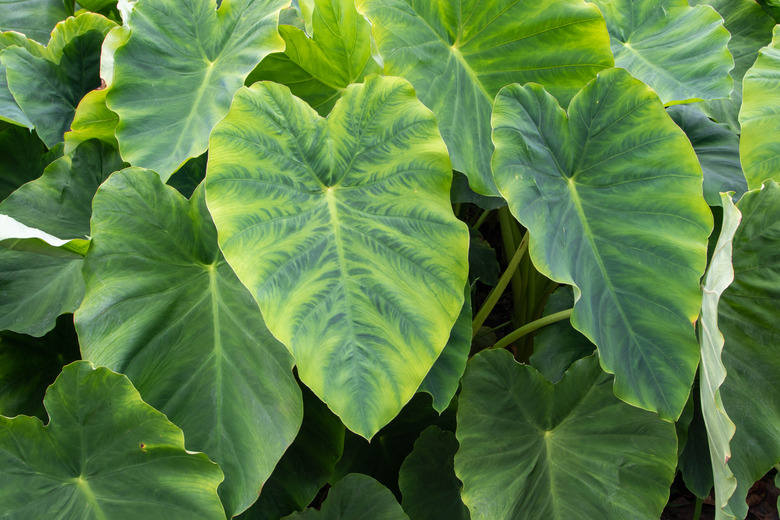Are Elephant Ear Plants Perennial?
Elephant ears, those large-leafed plants grown from tubers — some the size of softballs — give a tropical flair to home landscapes. They're tender perennials, hardy only in the warmest parts of the United States. In areas with colder winters, they're annuals and must be lifted in the fall or replanted every year.
Types of Elephant Ears
Types of Elephant Ears
Elephant ears represent three genera of plants: Colocasia, Alocasia, and Xanthosoma. All plants are similar in appearance, with large, heart-shaped leaves – some growing up to 4 feet or more in length. Depending on genus and species, elephant ears are winter-hardy only in U.S. Department of Agriculture plant hardiness zones 8 through 12.
Colocasia is the most commonly found type of elephant ears since breeders have worked on the species C. esculenta to produce many colorful leaf variations. All three plants have poisonous calcium oxalate crystals in the leaves, stems, and roots, so it's best to use gloves when handling. Taro is a type of edible elephant ear but requires cooking as it's inedible in its raw state.
How and Where to Plant Elephant Ears
How and Where to Plant Elephant Ears
Elephant ears grow well in partial shade with moist soil and look best when planted in the back of borders, in large containers or around ponds. Plant them outdoors after there's no more danger of frost, or start them indoors six to eight weeks before the last frost date.
Cover elephant ear tubers or rhizomes with 2 to 3 inches of soil and give them plenty of room to spread out. Elephant ears are heavy feeders and need frequent fertilization with either a general purpose fertilizer or a plant food formulated for foliage house plants. Elephant ears regular watering, especially for container-grown specimens as their roots must remain moist.
It's best to divide overgrown plants in the spring.
Overwintering Elephant Ears
Overwintering Elephant Ears
Elephant ears grow from tubers or rhizomes, depending on species. To save elephant ears from year to year, cut the foliage back after the first frost, leaving 2 to 4 inches of stem, and carefully dig up the underground structures. Put the tubers or rhizomes in a protected, well-ventilated spot until they're dry to the touch, and then store them in vermiculite, packing peanuts, or shredded paper. Avoid using sand or moss, as these materials hold moisture and encourage premature sprouting.
Keep the dormant tubers or rhizomes in a cool, dark location such as a crawlspace or basement. Discard any that develop soft spots or mold. Spray shriveled tubers and rhizomes with water a day or two before replanting them in the spring.
Additional Elephant Ear Varieties
Additional Elephant Ear Varieties
Besides the plain green forms, several newer cultivars of elephant ears are available. 'Black Magic' grows 3 to 5 feet tall with burgundy-black foliage, while the similarly-sized Black Stem has green leaves with burgundy-black veins. Illustris is a small elephant ear; its green foliage has black markings and lime green leaf margins and veins. 'Lime Zinger' grows 5 to 6 feet tall with bright chartreuse-green foliage.
References
- University of Florida IFAS Extension; Alocasia Spp.; Edward F. Gilman; 2009
- University of Illinois Extension: Overwintering Tropical Plants
- Iowa State University Extension; Growing Elephant Ear; James Romer; May 2005
- University of Florida IFAS Extension; Xanthosoma Sagittifolium; K. A. Langeland, et al.; 2008
